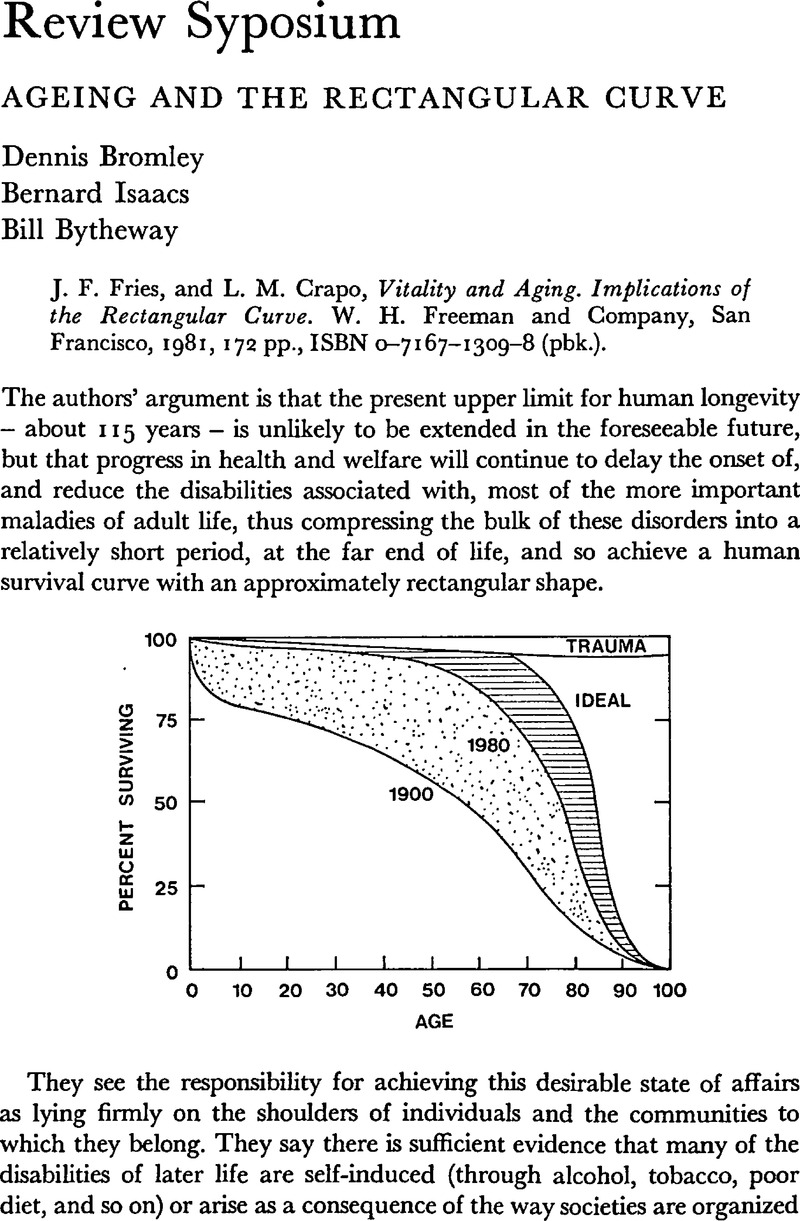Article contents
Ageing and the Rectangular Curve
Published online by Cambridge University Press: 14 November 2008
Abstract

- Type
- Review Syposium
- Information
- Copyright
- Copyright © Cambridge University Press 1982
References
NOTES
1 Isaacs, B., (1971), The Concept of Pre-death, Lancet, i, 1115–9.CrossRefGoogle Scholar
2 On page 6 an attempt is made to derive an estimate of the limit of the life span. It is based on the assumption that come the day that life expectation at birth is the same as that at age 65, then the rectangular society will have been achieved, and life expectation will then be the ‘maximum median natural human life span’. In fact, all it reflects is the improbable situation of mortality between birth and age 65 having been eliminated.
3 In a detailed analysis of the mortality rates based on 4,404 centenarians, Thatcher (81) finds that ‘the chance that a centenarian will survive from one year to the next is slightly over 50 percent, at least up to the age of 108’. (The qualification reflects the limit of his analysis rather than an increase in mortality). Rejecting a Gompertz model, he concludes that the data support the theory that the mortality rate ‘tends to a limit less than unity’. Thatcher, A. R., ‘Centenarians’, Population Trends, 25, pp. 11–14, 1981.Google Scholar
4 There is a certain inconsistency in the authors' terminology and estimates of maximum life span. On page 12, they conclude that the oldest confirmed age of a centenarian is 114 years, on page 22 that there were 24 people who died in the US in 1975 at the age of no years, on page 25 that the ‘characteristic maximum life span’ for humans is ‘over 100 years’, and on page 140 that in the rectangular society (towards which we are moving), ‘the maximum life span is fixed at about 100 years’. Quite extraordinarily in this fictional society with a mean life span of 85 years and standard deviation of a little under four years (p. 76), the chances of reaching 110 years are less than I in 10,000,000,000. Does this mean centenarians will be denied health services that they presently enjoy?
5 Barker (1981) spells out clearly the danger that modem sociobiology with demographic back-up will legitimate a brand of racism which posits racial differences, not superiorities. Barker, M., The New Racism, Junction Books, London, 1981.Google Scholar
- 2
- Cited by


